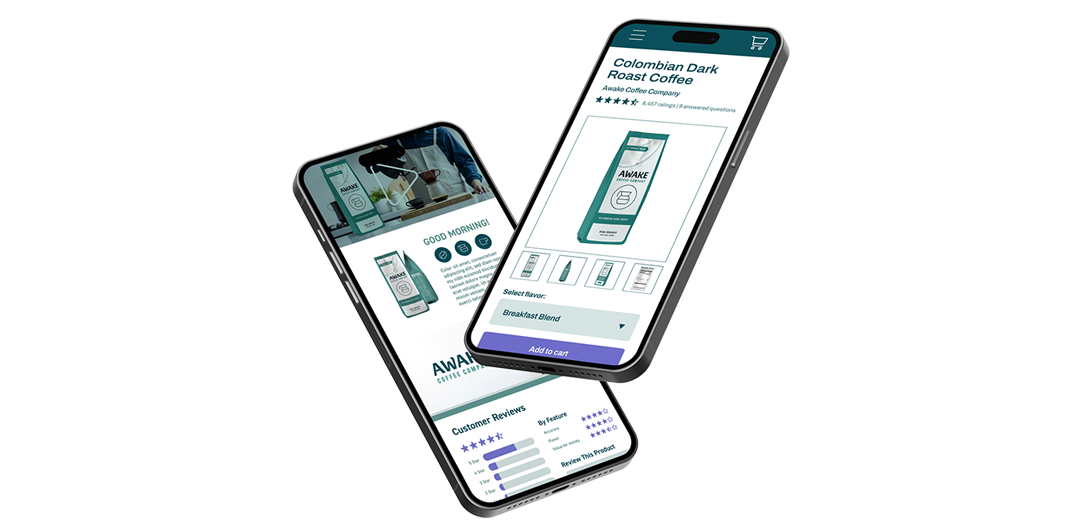The recent rise of e-commerce in retail has forever changed how consumers interact with brands and retailers. An expanding digital shelf puts product information at the consumer’s fingertips. As a result, shoppers are researching and comparing everything they buy online, from push pins to leaf blowers.
Home repair, improvement and DIY have gone digital. Consumers can access products and product information through e-commerce platforms, eliminating the need for time-consuming in-store trips. Home improvement companies must implement e-commerce strategies that provide the information consumers need –– and now demand –– before purchasing online.
This article from 1WorldSync explores e-commerce trends for home repair businesses and how to position yourself to succeed in the ever-expanding e-commerce space.
Increased Demand for Ship to Home
E-commerce shoppers are accustomed to near-instant gratification. Amazon’s two-day delivery has set a high bar for retailers trying to keep up with consumer delivery demand.
As supply chain concerns continue for home repair businesses, decision-makers must find new ways to deliver products to consumers on time at reasonable price points. Even big-box stores like Home Depot face logistical and fulfillment challenges directly from delivery demands and supply chain disruptions.
But as customer shopping behavior evolves, so do fulfillment challenges. In the fourth quarter of 2022, Home Depot fulfilled 45% of online orders in-store. That’s down from 50% in the third quarter. What do these numbers mean? Shoppers want their orders delivered to their doors.
The increased demand for home delivery allows home repair companies to meet consumer needs while positioning themselves as the go-to retailer for home repair products and equipment. Shoppers want convenience and seek out retailers who can deliver it.
Home repair and improvement stores were once exclusively brick-and-mortar. As e-commerce retail molds consumer shopping behavior, this industry must change to meet shopping expectations and delivery demands. Home repair companies can bypass in-store stocking and deliver products directly to the consumer by streamlining supply chains.
With an increased demand for home delivery, home improvement retailers must provide digital shopping opportunities that deliver on product variety and selection, accurate inventory availability, and prompt delivery to the consumer.
Using Mobile to Connect In-Store and Online
Mobile usage has transformed consumer shopping behaviors. In the past, shoppers would go in-store to purchase the items needed for home repair. Then a digital shift occurred, and consumers could go online to browse items. Now, mobile app usage is part of the online and in-person shopping experience.
With in-store product location, enhanced product content, product comparisons and other relevant data, apps for home repair companies are integral to a positive customer experience. According to 1WorldSync’s 2022 research, retailers have seen an 18% increase in mobile app usage. Ninety percent of shoppers use their smartphones to look up products while shopping in a physical store at least some of the time, and consumers use their smartphones while shopping 49% of the time. Apps have become central to omnichannel commerce success.
As retailers adapt to omnichannel sales, data synchronization is essential. 1WorldSync research found that 81% of consumers expect a brand’s product content experience to be similar everywhere they interact with that brand. Product content, branding, inventory, availability, and pricing must be synched between a retailer’s website and app based on geographical location.
Consumers use apps to shop. In an increasingly e-commerce retail space, home repair companies must prioritize data synchronization within mobile apps to deliver the superior shopping experience the consumer has come to expect.
Consumers Spending More Time with Content
1WorldSync’s most recent report finds that consumers spend more time with product content than ever. Inflation is causing consumers to more carefully consider where they spend their resources: 67% of consumers spend more time with content to ensure they get the best value. Other motivations for close content examination include:
- Values alignment
- Review and rating evaluation
- Product comparisons
- Better understanding of product details and functionality
Product content is the cornerstone of a successful omnichannel business. And if you’re prioritizing e-commerce growth, your content strategy is the most crucial component of your marketing strategy. Content is how consumers discover, learn about, and ultimately come to purchase your products.
Because shoppers place a high value on quality product content, home repair and improvement retailers must create content that helps them meet their goals. And with increasing online competition, creating and curating quality content for shoppers is a primary means by which you can engage shoppers, distinguish yourself from industry competitors, and increase your conversions.
Through enhanced content, you convey your expertise and brand and product quality while educating the consumer. Quality imagery, 360-degree spin photography, product bundling and recommendations, comparison tables, and how-to videos: all examples of enhanced product content that provides shoppers with the information they need to make a confident, informed purchase decision.
AR Capabilities
E-commerce shopping is here to stay. Consumers have grown accustomed to the convenience of online shopping. And with the expanding digital shelf providing endless product options, comparison and research opportunities, and information on brands and retailers, the pros of an e-commerce experience are enough to keep consumers shopping from their phones or computers rather than visiting the store.
E-commerce solves many problems and inconveniences for shoppers, but it has its drawbacks. Chiefly, shoppers can’t evaluate products in person before they buy. And while nothing can replace the ability to turn over a product in your hands, AR technology is constantly developing to deliver an in-store shopping experience through digital retail platforms.
1WorldSync’s 2022 Consumer Product Content Benchmark Report found that 52% of shoppers have used an AR feature to view a product on their smartphone in the last year. Here’s what we found consumers like about AR:
- Helps to get a sense of the size and scale of the product
- Shows the brand is modern and cutting-edge
- Displays product or brand personality
AR technology allows shoppers to digitally replicate a product in their space before making any financial investments. These capabilities significantly benefit the home repair and improvement industry because consumers can visualize how a product looks, fits and feels in their homes.
AR acts as a “preview” for shoppers exploring brands and products. For example, if consumers choose new ceiling fans for their home, they can see exactly how various models will look from multiple angles. This tech creates realistic product expectations, resulting in higher satisfaction upon delivery and lower return rates, benefitting both the consumer and the brand.
E-commerce eliminates the in-person, physical product evaluations shoppers often desire, but AR-powered content fills the gaps and empowers confident purchase decisions.
Win the Digital Shelf with E-Commerce Optimization
The e-commerce space is rapidly expanding. For home repair and improvement retailers to win the market, they must prioritize their e-commerce strategy.
At 1WorldSync, we provide the tools and resources you need to optimize your online presence. From basic content compliance to enhanced content capabilities, we have the solutions you need to thrive in this market. Drive e-commerce conversion with solutions from 1WorldSync. Reach out to our team today to start the conversation.





